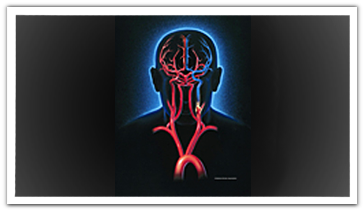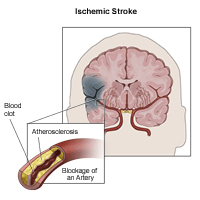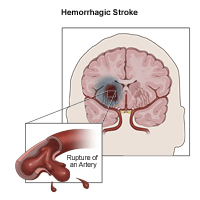Not sure whether a person's symptoms are a stroke? B.E.F.A.S.T. and quickly check for any of these signs of stroke:
- B = Balance – Is the person suddenly having trouble with balance or coordination?
- E = Eyes – Is the person experiencing blurred or double vision or a sudden loss of vision in one or both eyes?
- F = Face Drooping – Does one side of the face droop or is it numb?
- A = Arm Weakness – Is one arm weak or numb? Ask the person to raise both arms. Does one arm drift downward?
- S = Speech Difficulty – Is speech slurred, are they unable to speak, or are they hard to understand? Ask the person to repeat a simple sentence like, “The sky is blue.” Is the sentence repeated correctly?
- T = Time – If the person shows any of these symptoms, even if the symptoms go away, call 9-1-1 and get them to the hospital immediately. Call 911 now!
Identifying and reacting to stroke symptoms quickly is crucial to obtaining proper treatment for an individual experiencing a stroke.
Find the closest Inova hospital to you
- Sudden and severe headache
- Trouble seeing in one or both eyes
- Sudden dizziness; trouble walking
- Sudden confusion; trouble speaking
- Sudden numbness or weakness of face, arm or leg
"Time is brain," points out Laura Buhler, RN, facilitator of Inova's stroke support group at Inova Fairfax Hospital. "It's important to seek medical care with the very first signs of stroke symptoms,” Buhler says. "We can administer tPA, but only within the first three hours of stroke onset – or up to four and a half hours in certain patients. A mechanical thrombectomy may be beneficial within six hours of stroke onset or, for some patients under certain conditions, up to 24 hours of onset."
 Strokes are aptly referred to as a "brain attack." When there is an interruption of blood flow to the brain, either because of a clot or ruptured blood vessel, sudden brain damage occurs.
Strokes are aptly referred to as a "brain attack." When there is an interruption of blood flow to the brain, either because of a clot or ruptured blood vessel, sudden brain damage occurs.
A person who is having a stroke requires immediate medical attention. The longer it takes to receive care, the more brain cells will die and the greater the risk of disability or even death.
 Ischemic stroke is most common and accounts for 87 percent of strokes. Ischemic stroke is caused by a clot that prevents blood flow to the brain. The clot can either travel to the brain from another part of the body or can develop in an artery.
Ischemic stroke is most common and accounts for 87 percent of strokes. Ischemic stroke is caused by a clot that prevents blood flow to the brain. The clot can either travel to the brain from another part of the body or can develop in an artery.
 Hemorrhagic stroke is a second type of stroke which occurs when a blood vessel in the brain breaks or ruptures. Hemorrhagic stroke is less common, but it's more deadly.
Hemorrhagic stroke is a second type of stroke which occurs when a blood vessel in the brain breaks or ruptures. Hemorrhagic stroke is less common, but it's more deadly.
Click here for a variety of educational materials on topics of stroke prevention, symptoms, treatment and rehabilitation from the American Stroke Association.
Inova's online health library has up-to-date information about stroke, its warning signs, treatments and rehabilitation.
The American Stroke Association's Life After Stroke website contains valuable information to help patients and caregivers better understand their condition, maximize their recovery and reduce future risk of stroke.
- Inova stroke survivors & caregivers support group – meets regularly at several locations
- Search for more stroke support groups in your community (National Stroke Association)